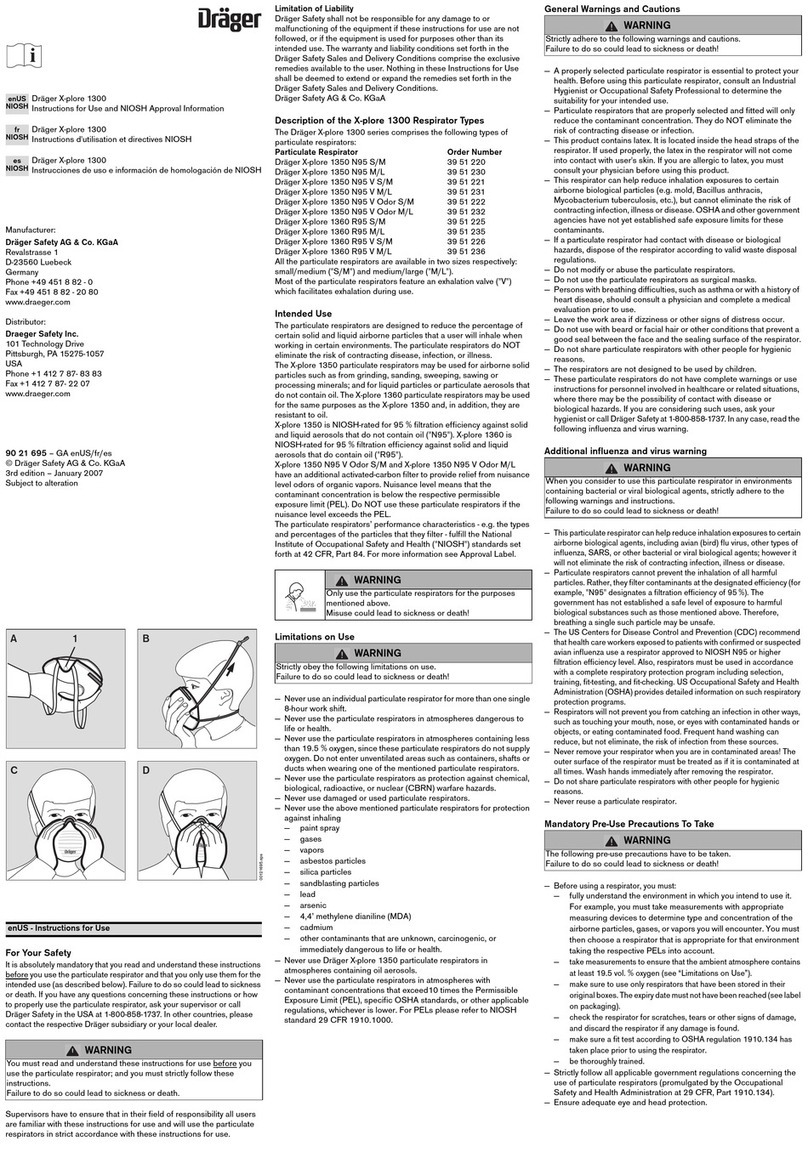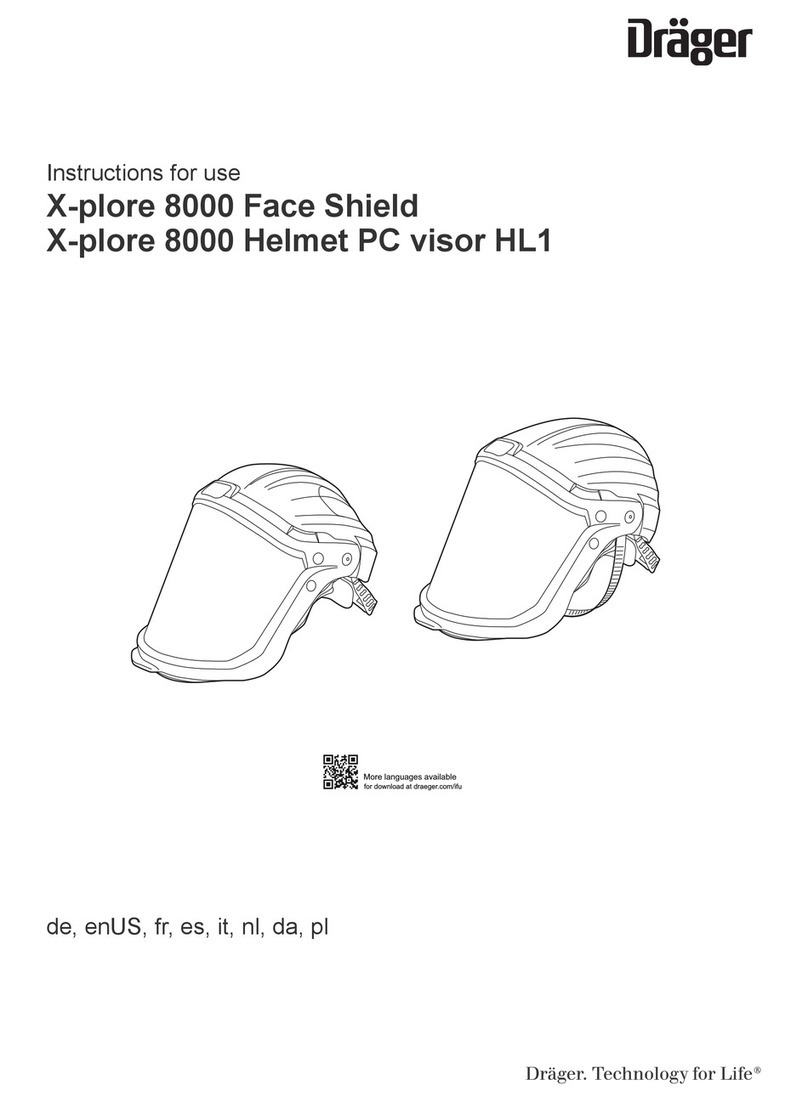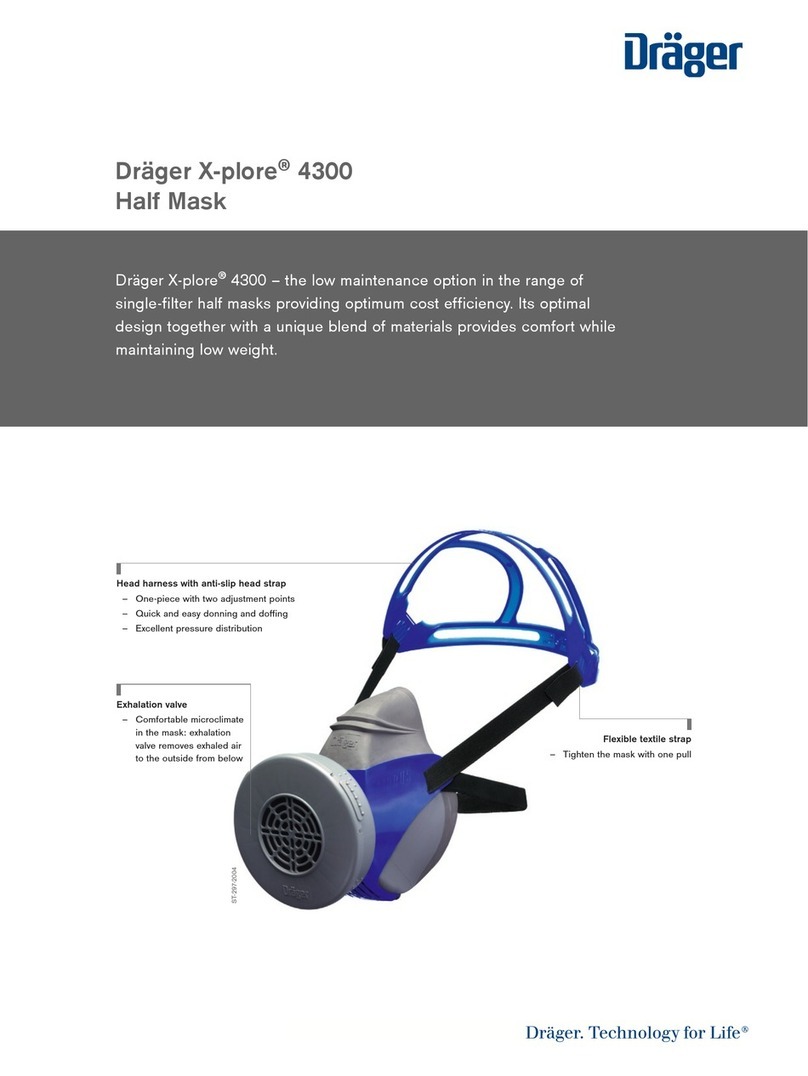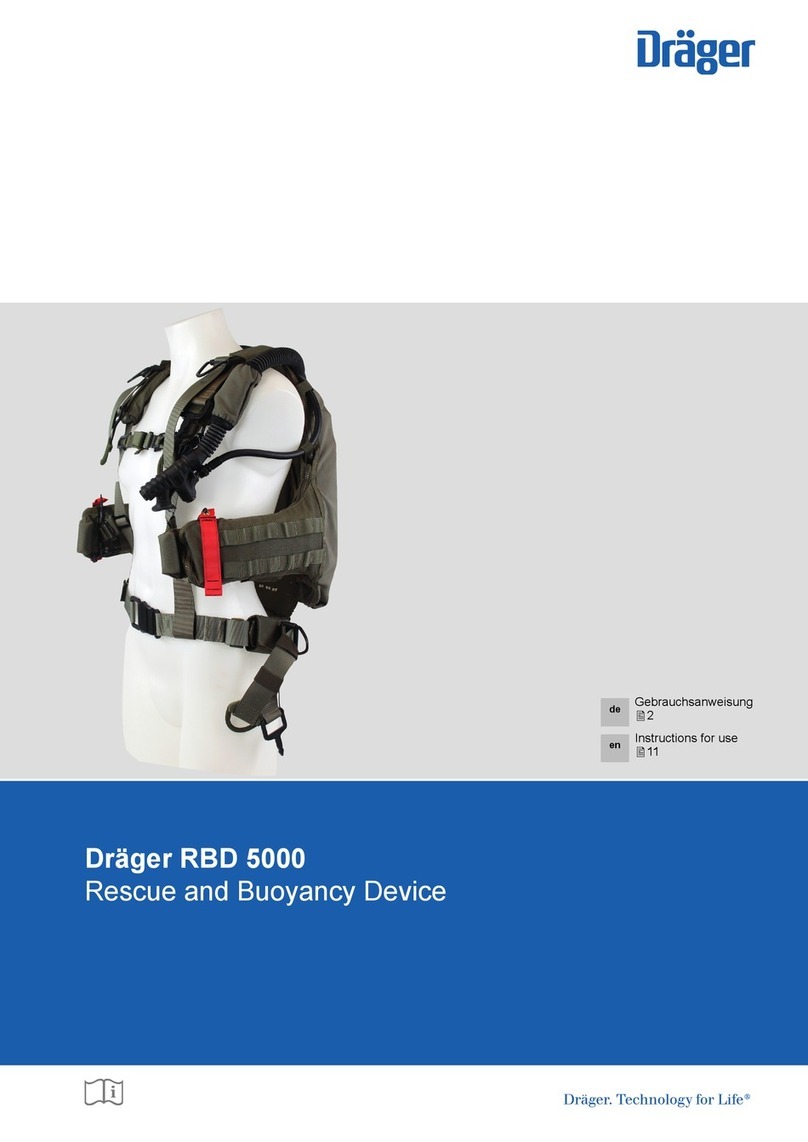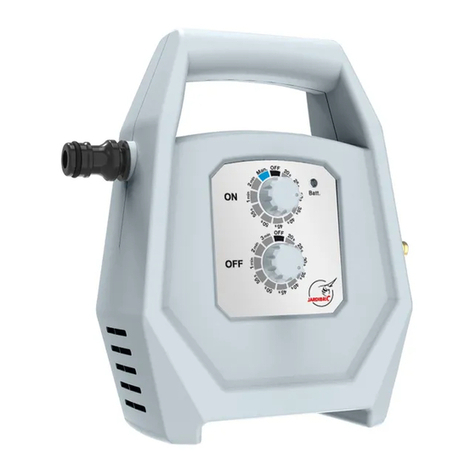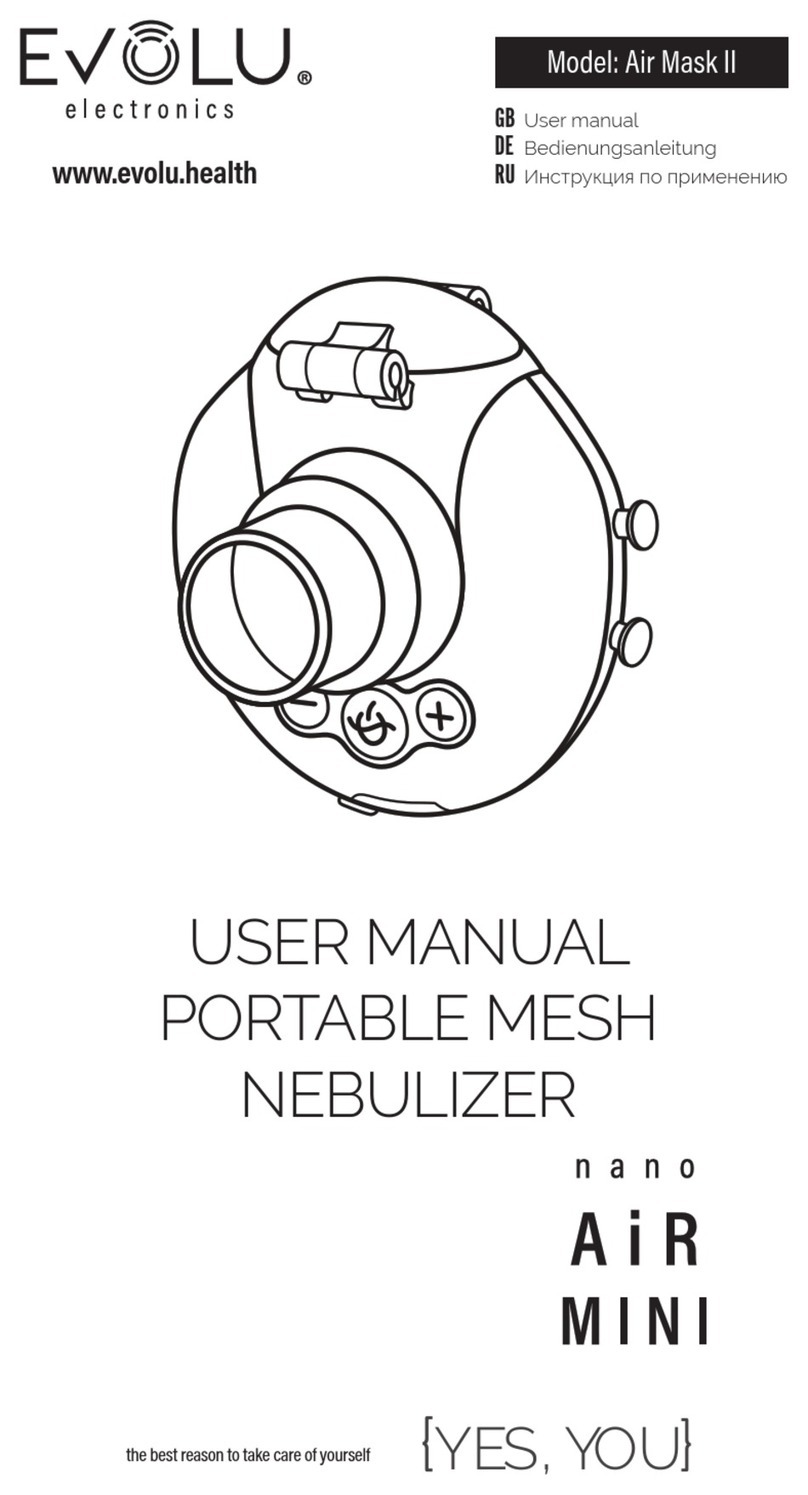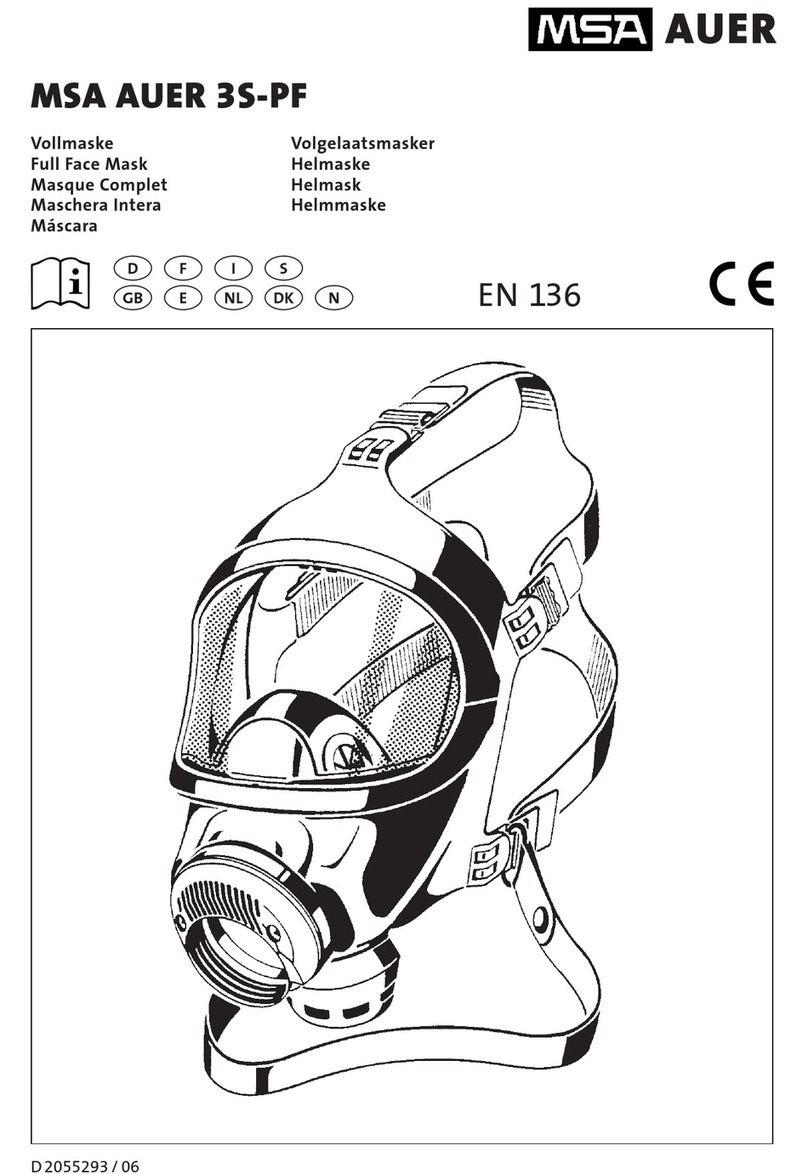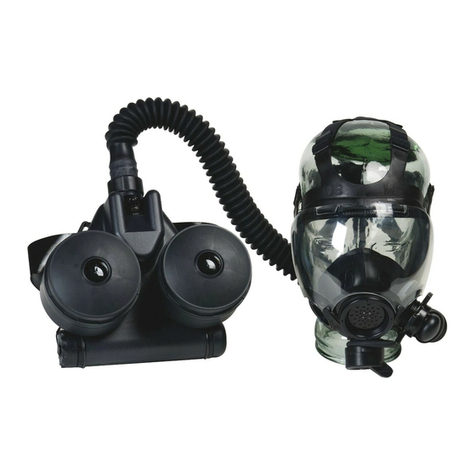
X-plore® 9500
Airline belt manifold Instructions for use
3363103 (A3-D-P)
1 For your safety
● Before using this product, carefully read these instructions for use and
those of the associated products.
● Strictly follow the instructions for use. The user must fully understand
and strictly observe the instructions. Use the product only for the
purposes specified in the intended use section of this document.
● Do not dispose of the instructions for use. Ensure that they are
retained and appropriately used by the product user.
● This product should only be used by appropriately trained and
competent personnel.
● Comply with all local and national rules and regulations associated
with this product.
● Only trained and competent personnel are permitted to inspect, repair
and service the product. Dräger recommend a Dräger service contract
for all maintenance activities and that all repairs are carried out by
Dräger.
● Properly trained service personnel must inspect and service this
product as detailed in the "Maintenance" chapter of this document.
● Use only genuine Dräger spare parts and accessories. Otherwise, the
proper functioning of the product may be impaired.
● Do not use a faulty or incomplete product. Do not modify the product.
● Notify Dräger in the event of any component fault or failure.
The latest version and other translations of these instructions for
use can be downloaded in electronic form from the Technical
Documentation database (www.draeger.com/ifu). In light of
product updates, Dräger recommend always using the latest version of the
instructions for use.
2 Conventions used in this document
2.1 Meaning of the warning notices
The following warning signs are used in this document to indicate and
highlight areas of the associated text that require particular attention by the
user. The meaning of each of the warning notices is defined as follows:
WARNING
Indicates a potentially hazardous situation. If not avoided, it could result in
death or serious injury.
CAUTION
Indicates a potentially hazardous situation. If not avoided, it could result in
physical injury. It may also be used to alert against unsafe practices.
NOTICE
Indicates additional information on how to use the product.
2.2 Trademarks
The following internet page lists the countries in which Dräger trademarks
are registered: www.draeger.com/trademarks.
3 Description
3.1 Product overview
The Dräger X-plore® 9500 (see Fig. A) is a manifold carried on a belt that
is used to connect an external breathing air supply (compressed air line) to
a mask. For this purpose, the manifold has an input connection (4) for
connecting the compressed air line and a coupling on the mask adapter (1)
for connecting the mask.
CAUTION
Only apply pressure to the input side, see (4). A pressure load on the
output side can cause damage to the device.
During use, the pressure reducer in the manifold ensures a continuous flow
of air from the compressed air line to the mask. The air flow lies within the
safe limit values required by the mask. The surplus valve in the mask
adapter is used to continuously release excess air, ensuring a supply of the
correct pressure during use. The control valve (2) of the pressure reducer
allows individual adjustment of the air volume within the preset limits.
The warning whistle (3) is a warning device for low input pressure. The
whistle will sound during use to alert the wearer in the event that the
pressure of the breathing air supply falls below the level necessary for a
sufficient supply.
The X-plore® 9500 is compatible with the following Dräger respirator
series: FPS®7000 series (RA), X-plore 6000 series and Panorama Nova®
series (RA). (The X-plore 6300 is shown here). The compatible Dräger
masks are classified as Class 4B according to EN 14594:2018.
The air line breathing apparatus and other accessories used with this
product must be certified Dräger components in an approved
configuration. Otherwise, use of the product may be impaired. Contact
Dräger for further information.
This device is optionally available with radio frequency identification (RFID)
to facilitate electronic management and location of devices by means of a
radio frequency reader. When fitted, the passive RFID tag is positioned
inside the manifold casing.
3.1.1 Breathing air supply
The breathing air supply (supply from a compressed air line) is an external
breathing air source that is fed from a breathing air cylinder or a
compressor unit; the breathing air supply delivers the specified air quality
with the required pressure and required flow rate (see Section 4.1 for more
information).
3.2 Intended use
The X-plore® 9500 is designed for use with approved Dräger compressed
air respiratory protection equipment and protects the breathing system
from the effects of harmful substances. The equipment is only suitable for
use with a compressed air line.
Use in potentially explosive atmospheres
The suitability for use in potentially explosive atmospheres depends on the
components used. Approval information is specified on the component
name plates. The component with the lowest zone determines the
suitability of the system.
Contact Dräger for more information.
3.3 Limitations on use
The device is not suitable for CBRN hazard situations (chemical,
biological, radiological and nuclear hazard situations).
3.4 Approvals
This product is approved per:
● EN 14594:2018
● (EU) 2016/425
● Regulation 2016/425 on personal protective equipment, as amended
to apply in GB
Declarations of conformity: see www.draeger.com/product-certificates.
Important notice regarding the Pressure Equipment Directive (German:
DGRL): The X-plore® 9500 is solely intended for use with air line breathing
apparatuses. It is classified as safe pressure equipment according to the
DGRL under the requirement of good engineering practice. The equipment
cannot be DGRL-certified.
3.5 Marking and symbols
The product type is specified on the label on the manifold casing. The
product's serial number is located on the manifold body.
The marking on the air supply hose indicates whether the hose is heat
resistant (H) and/or antistatic (S).
4Use
4.1 Breathing air supply
WARNING
The quality of the air supply must meet the requirements for breathing air
in accordance with EN 12021 in EU countries or AS/NZS 1715:2009 in
Australia and New Zealand. Oxygen or oxygen-enriched breathing air
must not be used. The moisture content of breathing air should be
controlled within the limits specified in the standard in order to prevent the
device from freezing.
Carry out a risk assessment of the location of use to ensure that no air
supply other than breathable air can be connected.
Sufficient protection by the equipment is not guaranteed in highly toxic
environments.
The user must ensure that the capacity of the air supply system is
sufficient for every single connected user. In addition, safe retraction must
be ensured if the supply through the compressed air line fails.
Use a compressed air cylinder with pressure reducer or a stationary or
mobile compressor with suitable filter and air heating or air cooling system.
Compliance of the breathing air supply with the quality criteria is
mandatory. It must meet the following requirements for pressure and flow:
● Input pressure 2.8 to 10 bar
● Flow rate 350 to 1200 litre/minute
The maximum number of users that can be connected to the Dräger
breathing air supply system at any one time can be found in the associated
instructions for use.
When using a compressed air cylinder for breathing air supply, it must be
possible to move the air supply around an explosion-hazard area.
Conductive floors are mandatory in zone 1 and zone 21 if combustible
dusts with a minimum ignition energy of less than 10 mJ are present.
4.1.1 Compressed air supply hose
● Air hose coupling and input coupling of the respective product must be
compatible. As standard, the Rectus 96 series or a CEJN quick
connect coupling plug is supplied as the input coupling.
● The maximum working pressure of the Dräger compressed air supply
hose is 10 bar.
● Ensure that supply hoses with a total length greater than 50 m have an
appropriate earth connection.
EU countries
The following applies when using hoses approved by Dräger: A maximum of
100 m of hose may be used. In addition, a maximum of four individual hoses
(i.e. a maximum of five hose connections) are permitted on one air supply.
4.1.2 Pressure drop in the compressed air supply hose
CAUTION
The use of extension hoses causes a pressure drop between the
breathing air supply and the manifold.
► To compensate for the resulting pressure drop, increase the pressure
from the breathing air supply (e.g. ring pipe, compressor) accordingly.
The following table is a guide that lists examples of breathing air supply
pressures necessary so that a sufficient flow of air is available at the
manifold input.
This table only applies if using approved Dräger compressed air supply
hoses. If using hoses from other manufacturers, the minimum pressure of
3.3 bar must be available at the manifold input.
If the warning whistle still sounds, there may be a pressure loss in the hose
due to the specific conditions of the breathing air supply. In this case, the
pressure must be increased until the warning whistle stops sounding. If the
warning whistle does not respond, the user is supplied with sufficient
breathing air.
4.2 Preparation for use
4.2.1 Product preparation
The belt with air manifold can be worn on the left or right as required. To
change the carrying side, loosen the belt, remove the case if necessary
and then turn the manifold (see Fig. B). When fitting, always ensure that
the shoulder of the whistle cover sits below the rib in the manifold housing
(see Fig. C). With the belt and air distributor in place, the wearer must be
able to move their head freely without pulling on the hose or getting
tangled.
1. Always carry out a visual inspection first (see Section 6.2).
2. Don the belt. Ensure that the X-plore 9500 is fitted close to the body.
3. Connect the mask adapter to the mask (see Fig. D).
WARNING
Correct fit of the mask can only be achieved if the entire mask seal makes
contact with skin. Head hair, facial hair (including beard stubble and
sideburns), earrings, other facial piercings and normal spectacles will
interfere with the mask seal and are not permitted in the sealing area.
Additionally, head hair that could affect the mask fit (buns, pony-tails,
hairpieces, etc.) is not permitted.
4. Set the regulation knob to the minimum position (see Fig. F).
5. Connect the air supply to the input coupling (see Fig. E). The warning
whistle will sound briefly when the pressure increases.
Trademark Trademark owner
X-plore®Dräger
FPS®Dräger
Panorama Nova®Dräger
Approved body:
BSI Assurance UK Ltd.
Kitemark Court Davy Avenue
Knowlhill
Milton Keynes
MK5 8PP
United Kingdom
Identification number:
Notified body
involved in type approval and quality
control:
DEKRA Testing and Certification GmbH
Handwerkstrasse 15
70565 Stuttgart
Germany
Reference number:
0086 0158
Hose length
(in m)
Pressure
(in bar)
Hose length
(in m)
Pressure
(in bar)
1-10 3.8 51-60 6.3
11-20 4.3 61-70 6.8
21-30 4.8 71-80 7.3
31-40 5.3 81-90 7.8
41-50 5.8 91-100 8.3


